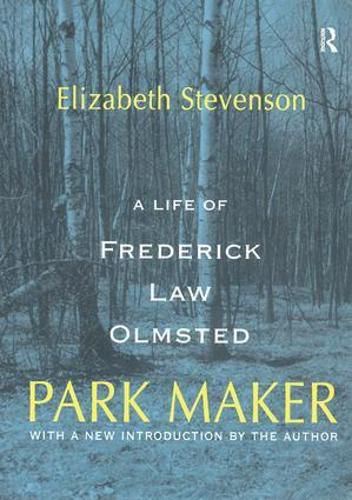Readings Newsletter
Become a Readings Member to make your shopping experience even easier.
Sign in or sign up for free!
You’re not far away from qualifying for FREE standard shipping within Australia
You’ve qualified for FREE standard shipping within Australia
The cart is loading…






On April 28, 1858, municipal officials announced the winner of the design contest for a great new park for the people of New York City–Plan no. 33, Greensward by Frederick Law Olmsted and Calvert Vaux. Though the appropriated ground for what was to become Central Park was nothing more than a barren expanse occupied by squatters, in a matter of a few years, Olmsted turned the wasteland into a landscape of coherence, elegance, and beauty. It not only surpassed the design ingenuity of its existing European counterparts but gained the designer national acclaim in a profession that still lacked a name.
Olmsted was an American visionary. He foresaw the day when New York and many other growing cities of the mid-nineteenth century would be plagued by what we presently term urban sprawl. And he was convinced of the critical importance of adapting land for the recreational and contemplative needs of city dwellers before the last remnants of natural terrain were engulfed by monotonous, straight streets and piles of erect, angular buildings. As a result of his early efforts to revolutionize the design of public parks, many cities today are able to preserve the recreational space and greenery within their urban limits. In addition, his thoughts and words on wilderness areas still echo across a century of preservation in the wild.
This lively and insightful account of his prodigious life features many of his outstanding landscape projects, including the Biltmore Estate, Prospect Park (Brooklyn), the capitol grounds in Washington, DC, the Boston Park System, the Chicago parks and the Chicago World Fair, as well as measures to preserve the natural settings at Niagara Falls, Yosemite, and the Adirondacks. It traces his early years and describes events that were to form his artistic, intellectual, and deeply humanistic sensibilities. And it restores this lost American hero to his prominent place in history. In addition to being the acknowledged father of American landscape architecture, Frederick Law Olmsted helped shape the political and philosophical climate of America in his own time and today.
Elizabeth Stevenson is the author of the Bancroft Award-winning Henry Adams: A Biography; The Glass Lark, a biography of Lafcadio Hearn; and Babbitts and Bohemians: From the Great War to the Great Depression, all available from Transaction.
$9.00 standard shipping within Australia
FREE standard shipping within Australia for orders over $100.00
Express & International shipping calculated at checkout
On April 28, 1858, municipal officials announced the winner of the design contest for a great new park for the people of New York City–Plan no. 33, Greensward by Frederick Law Olmsted and Calvert Vaux. Though the appropriated ground for what was to become Central Park was nothing more than a barren expanse occupied by squatters, in a matter of a few years, Olmsted turned the wasteland into a landscape of coherence, elegance, and beauty. It not only surpassed the design ingenuity of its existing European counterparts but gained the designer national acclaim in a profession that still lacked a name.
Olmsted was an American visionary. He foresaw the day when New York and many other growing cities of the mid-nineteenth century would be plagued by what we presently term urban sprawl. And he was convinced of the critical importance of adapting land for the recreational and contemplative needs of city dwellers before the last remnants of natural terrain were engulfed by monotonous, straight streets and piles of erect, angular buildings. As a result of his early efforts to revolutionize the design of public parks, many cities today are able to preserve the recreational space and greenery within their urban limits. In addition, his thoughts and words on wilderness areas still echo across a century of preservation in the wild.
This lively and insightful account of his prodigious life features many of his outstanding landscape projects, including the Biltmore Estate, Prospect Park (Brooklyn), the capitol grounds in Washington, DC, the Boston Park System, the Chicago parks and the Chicago World Fair, as well as measures to preserve the natural settings at Niagara Falls, Yosemite, and the Adirondacks. It traces his early years and describes events that were to form his artistic, intellectual, and deeply humanistic sensibilities. And it restores this lost American hero to his prominent place in history. In addition to being the acknowledged father of American landscape architecture, Frederick Law Olmsted helped shape the political and philosophical climate of America in his own time and today.
Elizabeth Stevenson is the author of the Bancroft Award-winning Henry Adams: A Biography; The Glass Lark, a biography of Lafcadio Hearn; and Babbitts and Bohemians: From the Great War to the Great Depression, all available from Transaction.